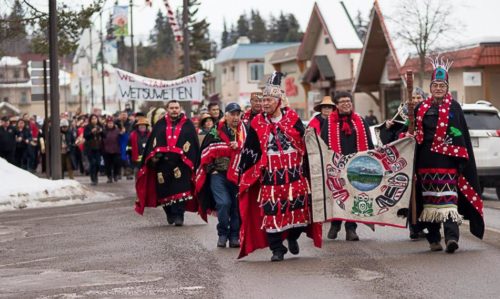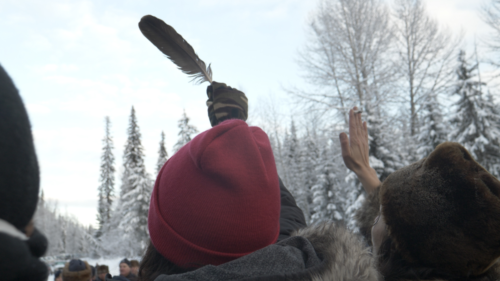Resources on Indigenous Sovereignty
TEN KEY RESOURCES:
- Canada versus First Nations: Whose land is it anyway? Understanding the history of First Nations governance.
- Informational update on Wet’suwet’en defence of their lands and waters.
- Video of Unist’ot’en Camp: Holding Their Ground Against Oil & Gas Pipelines
- An Injunction Against the Unist’ot’en Camp: An embodiment of healing faces eviction.
- Nine Things You Need to Know.
- At the core of the Wet’suwet’en conflict: How should resource development be governed?
- Corporations don’t seem to understand Indigenous jurisdiction.
- When pipeline companies want to build on Indigenous lands, with whom do they consult?
- The Wet’suwet’en and B.C.’s gas-pipeline battle: A guide to the story so far.
- When Indigenous Assert Rights, Canada Sends Militarized Police.
LEGAL BACKGROUND:
Canada knows that its own actions are illegal. The Wet’suwet’en fought for many years in the Delgamuukw-Gisday’wa court case to have their sovereignty affirmed by Canadian law. In 1997, the Supreme Court of Canada ruled that the Wet’suwet’en people, as represented by their hereditary leaders, had not given up rights and title to 22,000 square kilometers of Northern British Columbia.
- The Unist’ot’en stand-off: How Canada’s “prove-it” mentality undermines reconciliation.
- Law is on the side of Indigenous group in pipeline dispute, say legal experts.
- The Unist’ot’en Movement, Not the RCMP, Has the Law on Its Side.
- Injunctions: What Land Protectors Need To Know.
- UBC Faculty of Law on Canadian Law on Aboriginal and Treaty Rights.
- Making Space for Indigenous Law.




